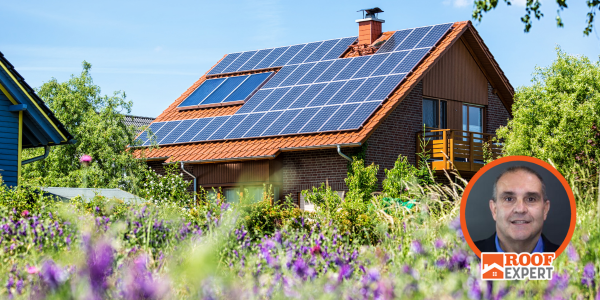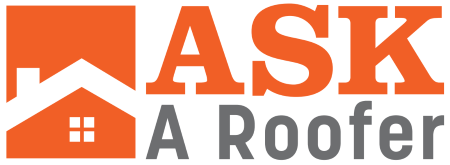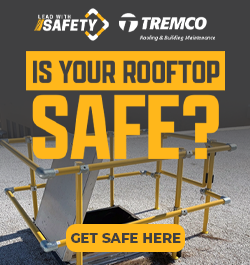How solar panels impact roof life and structure

AAR Expert John Kenny says thoughtful planning today ensures lasting performance for decades to come.
As solar technology becomes more affordable and energy efficiency moves to the forefront of building priorities, homeowners and commercial property owners increasingly turn to rooftop solar installations. While solar panels can be a smart investment for reducing utility costs and improving sustainability, they also significantly affect your roof's lifespan, structure and condition. Before committing to solar, it's critical to understand how the installation can affect your roofing system and what steps you should take to prepare your roof for decades of performance under added equipment.
The first and most important consideration is the age and condition of your existing roof. Solar panels are designed to last 25 years or more, which means the roof beneath them should have a comparable lifespan or be newly installed before panel placement. Installing solar on a roof nearing the end of its service life is a costly mistake. If the roof needs to be replaced just a few years later, the solar array must be removed and reinstalled, significantly increasing labor and cost.
Asphalt shingle roofs should be inspected on homes, and plenty of life should be left in them before solar panels are added. For commercial buildings with membrane or metal systems, a thorough roof inspection should assess the surface condition, insulation, attachment integrity and any history of ponding or leakage. If any repairs or replacements are needed, it's best to handle them before the solar installation. This avoids the risk of voiding manufacturer warranties and ensures long-term performance.
Another important factor is the structural load-bearing capacity of the roof. Solar panels add weight, typically between 2.5 and 6 pounds per square foot, depending on the mounting system. While this may not seem like much, it can stress the building structure over a large area or in combination with snow loads and HVAC equipment. A structural engineer should evaluate the roof framing for residential and commercial roofs to confirm it can safely support the new load.
Beyond weight, solar panel installation involves penetrations and attachments that, if done improperly, can compromise your roof's waterproofing. In residential applications, racking systems for asphalt or tile roofs often require fasteners to be drilled into the roof deck. If these penetrations aren't flashed and sealed correctly, they become prime spots for water infiltration. Ballasted systems may avoid penetrations on commercial flat roofs, but mechanically fastened solar racking still requires detailed coordination with the roofing membrane and warranty requirements.
This is where the value of a qualified roofing contractor comes in, especially one who is experienced in solar coordination. Ideally, your roofer and solar provider should collaborate on the design and installation plan to protect the roofing system and ensure all warranty terms remain intact. Many commercial membrane manufacturers require that authorized contractors oversee or perform any penetrations and flashing work related to solar installations.
Another layer of preparation involves layout and access planning. Panels should be placed in a way that doesn't block access to critical rooftop equipment, hatches, drains or fire lanes. This often involves coordination with mechanical, plumbing and electrical contractors on commercial buildings. Homeowners should ensure that skylights, vents and chimneys remain accessible and that solar placement does not interfere with passive ventilation strategies.
One of the lesser-discussed but increasingly important considerations is the effect of solar panels on roof lifespan. Interestingly, panels can extend the life of the roofing surface beneath them by shielding it from direct UV exposure, hail, and extreme temperature fluctuations. Studies have shown that covered areas experience less thermal cycling, which helps preserve membranes or shingles. However, this benefit only applies when the system is installed correctly. Poor workmanship, water traps and blocked drainage can quickly turn this benefit into a liability.
Also important is ensuring that roof warranties remain valid. Most roofing systems especially commercial flat roofs, come with long-term manufacturer warranties that require certain conditions to be met. Unauthorized solar installations, unsealed penetrations or incompatible materials can void these warranties. Before proceeding, always consult with the roofing system manufacturer or your certified contractor to ensure compliance.
For homeowners, local permitting and code compliance also play a role. Some municipalities require a roof inspection before solar can be approved, and others mandate setback distances for fire access or aesthetics. Commercial building owners may face additional regulatory reviews, especially if pursuing tax credits, LEED certification or public utility incentives.
Adding solar panels to your roof can be a highly economically and environmentally beneficial investment. But whether you're a homeowner or a commercial property manager, preparation is key. Ensure your roof is in excellent condition, verify its structural capacity, coordinate installation with a qualified roofer, and protect your warranties by following best practices.
When roofing and solar work together, the result is a high-performing, energy-efficient system that benefits both the environment and your bottom line. But, rushing into a solar project without addressing the roof beneath it can lead to costly setbacks. Thoughtful planning today ensures lasting performance for decades to come.
John Kenney is the CEO of Cotney Consulting Group. Read his full bio here.










Comments
Leave a Reply
Have an account? Login to leave a comment!
Sign In